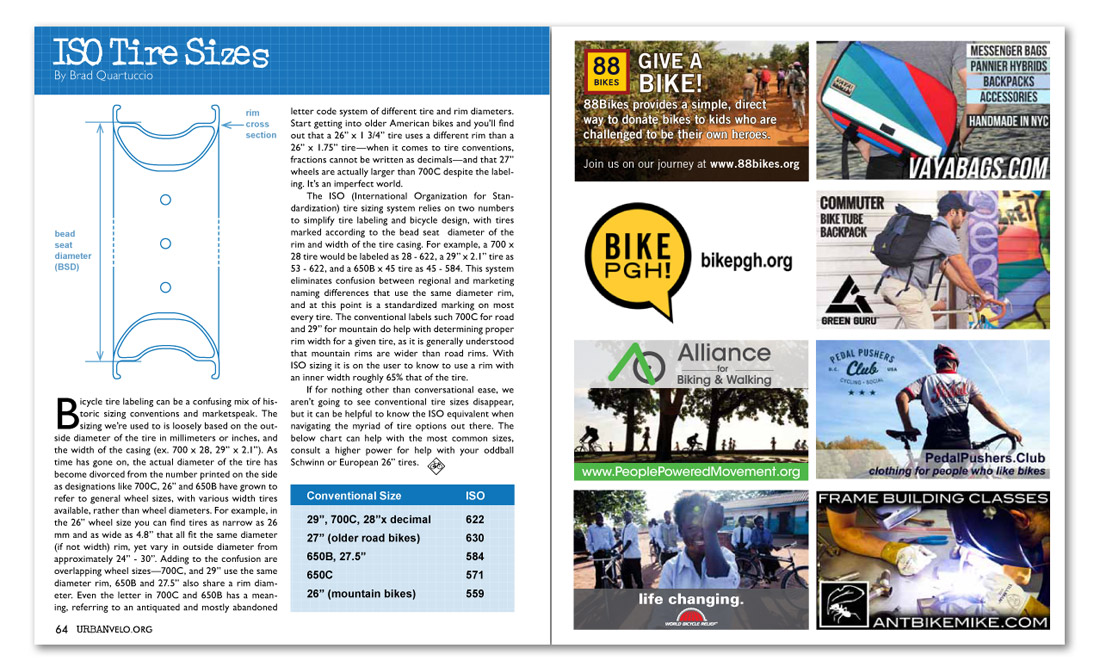


ISO Tire Sizes
By Brad Quartuccio
Bicycle tire labeling can be a confusing mix of historic sizing conventions and marketspeak. The sizing we’re used to is loosely based on the outside diameter of the tire in millimeters or inches, and the width of the casing (ex. 700 x 28, 29” x 2.1”). As time has gone on, the actual diameter of the tire has become divorced from the number printed on the side as designations like 700C, 26” and 650B have grown to refer to general wheel sizes, with various width tires available, rather than wheel diameters. For example, in the 26” wheel size you can find tires as narrow as 26 mm and as wide as 4.8” that all fit the same diameter (if not width) rim, yet vary in outside diameter from approximately 24” - 30”. Adding to the confusion are overlapping wheel sizes—700C, and 29” use the same diameter rim, 650B and 27.5” also share a rim diameter. Even the letter in 700C and 650B has a meaning, referring to an antiquated and mostly abandoned
letter code system of different tire and rim diameters. Start getting into older American bikes and you’ll find out that a 26” x 1 3/4” tire uses a different rim than a 26” x 1.75” tire—when it comes to tire conventions, fractions cannot be written as decimals—and that 27” wheels are actually larger than 700C despite the labeling. It’s an imperfect world.
The ISO (International Organization for Standardization) tire sizing system relies on two numbers to simplify tire labeling and bicycle design, with tires marked according to the bead seat diameter of the rim and width of the tire casing. For example, a 700 x 28 tire would be labeled as 28 - 622, a 29” x 2.1” tire as 53 - 622, and a 650B x 45 tire as 45 - 584. This system eliminates confusion between regional and marketing naming differences that use the same diameter rim, and at this point is a standardized marking on most every tire. The conventional labels such 700C for road and 29” for mountain do help with determining proper rim width for a given tire, as it is generally understood that mountain rims are wider than road rims. With ISO sizing it is on the user to know to use a rim with an inner width roughly 65% that of the tire.
If for nothing other than conversational ease, we aren’t going to see conventional tire sizes disappear, but it can be helpful to know the ISO equivalent when navigating the myriad of tire options out there. The below chart can help with the most common sizes, consult a higher power for help with your oddball
Schwinn or European 26” tires.
Conventional Size / ISO
29”, 700C, 28”x decimal / 622
27” (older road bikes) / 630
650B, 27.5” / 584
650C / 571
26” (mountain bikes) / 559